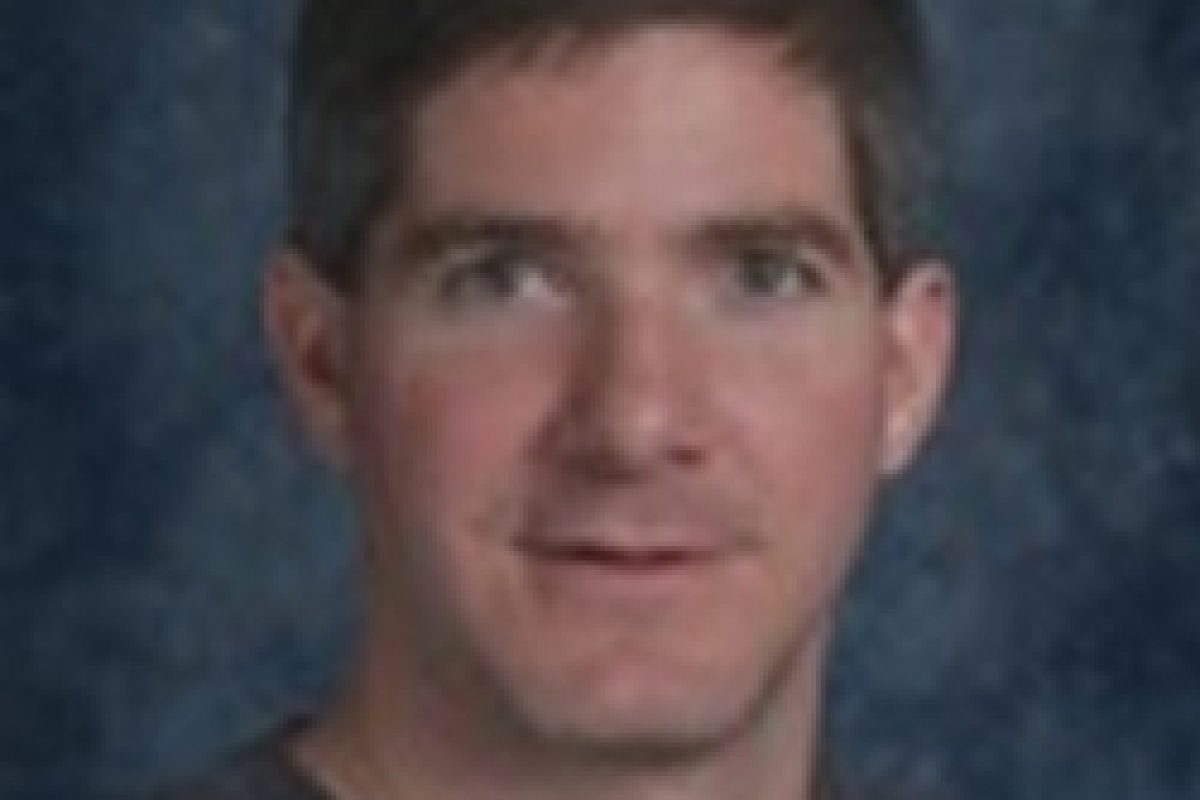1. Label-free blood screening instruments (Masters work). Whole blood analysis is a critical and familiar part of clinical workflows. Widely used clinical blood cytometers are generally expensive and bulky, require proprietary reagents, and provide limited quantitative information on cell morphology. When these automated cytometers do find abnormalities, manual examination of a stained blood smear using light microscopy is required for further diagnosis. This process is costly, slow, and not quantitative. In my early graduate career, working Prof. Gabriel Popescu, I set out to address these issues by utilizing Quantitative Phase Imaging (QPI). In QPI the phase shift (optical delay) of light passing through a sample is measured with sub-nanometer accuracy using interferometry providing high resolution topographic and tomographic data (Mir et al, Prog. Optics, 2012). I started by building a new QPI instrument utilizing commercial CD-ROM technology (Mir et al., Opt. Express., 2009) with the goal of developing a low-cost platform for an automated point-of-care blood screening tool. A comparison of results on patient samples with those from a clinical cytometer shows excellent agreement (Mir et al., J. Biomed. Opt., 2010 & Biomed. Opt. Exp., 2011) for clinical parameters on red blood cells. Additionally, my approach provides quantitative single cell morphological data, uses 2 orders of magnitude lower input sample, requires no reagents other than whole blood, and significantly lowers instrument cost. Collectively, these studies established that QPI based technologies are more sensitive than currently used clinical whole blood analyzers for common parameters used to characterize erythrocytes and also provide additional information that could lead to earlier diagnosis of certain diseases.
a) M. Mir, B. Bhaduri, R. Wang, R. Zhu, G. Popescu, Chapter 3 – Quantitative Phase Imaging, Progress in Optics, Ed: W. Emil, Elsevier, Volume 57, pp. 133-217 (2012)
b) M. Mir, Z. Wang, K. Tangella and G. Popescu, Diffraction Phase Cytometry: Blood on a CD-ROM, Optics Express, 17 (4), 2579-2585 (2009)
c) M. Mir, H. Ding, Z. Wang, J. Reedy, K. Tangella and G. Popescu, Blood Screening using Diffraction Phase Cytometry, Journal of Biomedical Optics, 15 (2), 027016 (2010)
d) M. Mir, K. Tangella and G. Popescu, Blood Testing at the Single Cell Level using Quantitative Phase and Amplitude Microscopy, Biomedical Optics Express, 2 (12), 3259-3266. (2011)
2. Non-perturbative, quantitative, and label-free live imaging spanning broad spatio-temporal scales (PhD work). A major challenge in the live imaging of cells and tissues is the need to non-destructively capture data at a broad range of temporal and spatial scales. High temporal and spatial resolution data is required to measure dynamics and morphological changes at the sub-cellular level, at sub-micron and millisecond scales, while at the same time placing this data in the context of the population (e.g. whole tissue) at scales of millimeters and days. In Prof. Gabriel Popescu’s lab we developed new quantitative phase imaging (QPI) hardware and analytical tools which provide quantitative information on morphology, mass density, and dynamics while spanning this broad range of spatial-temporal scales. Critically, these new microscopes use low-power white-light illumination and are sensitive to the endogenous optical properties of the sample, circumventing challenges associated with fluorescence microscopy such as photobleaching and phototoxicity (at the expense of molecular specificity). One of our instruments, known as the Spatial Light Interference Microscope (Wang et al, Opt. Express, 2011), for which I developed control hardware and software, has also been successfully commercialized (phioptics.com). I used these new tools to 1) Characterize single cell mass growth in a cell-cycle dependent manner, overturning widely used models of constant exponential growth (Mir et al, PNAS, 2011); 2) Measure the effects of estrogen and estrogen agonists on the growth and dynamics of estrogen sensitive breast cancer cells, showing that estrogen blockers lead to slower growing cells with lower cell masses (Mir et al, PLoS One, 2014); 3) Quantify neuronal network formation in human stem cell derived neurons and showed correlations between single cell mass growth, transport within the forming network, and the emergence of self-organization of the developing network (Mir et al, Sci. Rep., 2014). These studies have had a major impact on the rapid growth of the field of Quantitative Phase Imaging and its adoption by life scientists which is best illustrated by the increasing presence of dedicated QPI instruments in core facilities and laboratories around the world.
a) Z. Wang, L. Millet, M. Mir, H. Ding, S. Unarunotai, J. Rogers, M. Gillette, and G. Popescu, Spatial Light Interference Microscopy, Optics Express, 19 (2), 1016-1026 (2011)
b) M. Mir, Z. Wang, Z. Shen, M. Bednarz, R. Bashir, I. Golding and G. Popescu*, Optical Measurement of Cell Cycle Dependent Growth, Proceedings of the National Academies of Sciences (PNAS), 108 (32), 13124-13129 (2011)
c) M. Mir, A. Bergamaschi, B.S. Katzenellenbogen and G. Popescu, Highly sensitive quantitative imaging for single cancer cell growth kinetics and drug response, PLoS ONE, 9 (2), e89000 (2014)
d) M. Mir, T. Kim, A. Majumder, M. Xiang, R. Wang, S. C. Liu, M. U. Gillette, S. Stice and G. Popescu, Label-Free Characterization of Emerging Human Neuronal Networks” Scientific Reports, 4, 4434 (2014)
3. Computational Imaging (PhD and Postdoc work). Live-cell microscopy involves harsh tradeoffs between spatial resolution, temporal resolution, and sensitivity. In all optical microscopes spatial resolution is limited by the diffraction limit of light. Additionally, in the case of fluorescence microscopy, photo-bleaching and photo-toxicity present significant barriers for high-speed 3D imaging. Over the past two decades the field of compressed sensing has emerged to take advantage of an intrinsic property of natural images known as sparsity. Sparsity can be exploited to reconstruct high resolution images from lower resolution data (time or space) provided this data is acquired in an appropriate manner. Such computational imaging approaches, integrate hardware design and computational algorithms to boost spatial and temporal imaging resolution. During my graduate work, I developed a 3D deconvolution method (with Dr. D. Babacan) that exploits the sparsity of quantitative phase images to provide super-resolution 3D tomograms of living cells in a completely label-free manner (Mir et al., PLoS ONE, 2012). Using this approach I was able to resolve and characterize coiled and helical sub-cellular structures in E. coli which were previously only visible using fluorescence based super-resolution methods. We then further refined this approach by including a near-complete physical model of our optical system in a technique known as White-Light Diffraction Tomography (Kim et al., Nat. Photonics, 2014) which provides quantitative 3D tomograms of live cells with sub-cellular resolution. During my post-doctoral work, I led a project (senior author) to develop a generalizable compressed sensing scheme which provides a 5-10 fold reduction of light exposure and acquisition time in 3D fluorescence microscopy (Woringer et al., Opt. Express 2017). Collectively these works have demonstrated novel computational imaging approaches to improve the temporal and spatial resolution of light-microscopes and decrease photo-bleaching and photo-toxicity in 3D fluorescence imaging.
a) M. Mir, D. Babacan, M. Bednarz, I. Golding and G. Popescu, Three Dimensional Deconvolution Spatial Light Interference Tomography for studying Subcellular Structure in E. coli , PLoS ONE, 7 (6), e38916 (2012)
b) T. Kim, R. Zhou, M. Mir, S. D. Babacan, P. S. Carney, L. L. Goddard, and G. Popescu, White-light diffraction tomography of unlabelled live cells, Nature Photonics, (2014)
c) M. Woringer, X. Darzacq, C. Zimmer, and M. Mir, Faster and less phototoxic 3D fluorescence microscopy using a versatile compressed sensing scheme, Optics Express, 25(12), 13668-13683, (2017)
4. Single molecule tracking and high-resolution 4D imaging in live embryos (Postdoc work). The application of single-molecule tracking to study transcription factor dynamics has shed significant insight on their search and DNA-binding kinetics over the past decade in cell culture models. At the start of my postdoc the technology to perform such measurements in live embryos did not exist. I overcame this problem by building a customized lattice light-sheet microscope to acquire the first data on single-molecule kinetics of proteins within the nuclei of living animal embryos (demonstrated in Mice, C. elegans, and Drosophila, Mir et al., Methods Mol Biol., 2018). In addition to enabling single molecule tracking in embryos, lattice light-sheet microscopy also provides high resolution 4D imaging over large fields-of-views and extended periods of times. These unique imaging capabilities provided opportunities for several collaborative efforts centered on questions of nuclear organization and transcription regulation (these collaborative works are in addition to my primary focus on studying transcription factor binding in Drosophila embryos as described below). Notably, these efforts include 1) Revealing the role of phase separation in the formation of heterochromatin domains in collaboration with Gary Karpen’s group (Strom et al, Nature 2017), 2) Characterizing the role of intrinsically disordered regions in replication initiation factor loading in collaboration with Michael Botchan’s group (Parker et al., eLife 2019), 3) Developing capabilities to label non-repetitive genomic loci with Cas9 in collaboration with Ahmet Yildiz’s group (Qin et al, 2017) and 4) Using single molecule-imaging in C. elegans embryos to study the regulation of RNA polymerase II recruitment to chromatin during X-chromosome dosage compensation in collaboration with Barbara Meyer’s group (in preparation). These collaborative efforts have provided unique biophysical insights on nuclear organization, chromatin biology, and transcription regulation and have helped mature the technologies of single molecule imaging in live embryos and software to analyze large high-dimensional imaging datasets.
a) M. Mir, A. Reimer, M. Stadler, A. Tangara, A. S. Hansen, D. Hockemeyer, M. B. Eisen, H. Garcia, X. Darzacq*, Chapter 32 – Single Molecule Imaging in Live Embryos using Lattice Light-Sheet Microscopy, Methods in Molecular Biology, Nanoscale Imaging: Methods and Protocols, Volume 1814, Ed: Y. L. Lyubchenko, Springer, pp 541-559 (2018)
b) A. R. Strom, A. V. Emelyanov, M. Mir, D. V. Fyodorov, X. Darzacq, and G. Karpen, Phase separation drives heterochromatin domain formation, Nature, doi:10.1038/nature22989 (2017)
c) M. W. Parker, M. Bell, M. Mir, J. A. Kao, X. Darzacq, M. R. Botchan, J. M. Berger, A new class of disordered elements controls DNA replication through initiator self-assembly, eLife 8:e48562, (2019) Download PDF
d) P. Qin, M. Parlak, C. Kuscu, J. Bandaria, M. Mir, K. Szlachta, R. Singh, X. Darzacq, A. Yildiz, and M. Adli, Live cell imaging of low- and non- repetitive chromosome loci using CRISPR-Cas9, Nature Communications, 8, 14725, (2017)
5. High concentration multi-factor hubs accentuate transcription factor binding and gene activation (Postdoc work). During my postdoc I became fascinated with linking transcription regulation at the molecular scale to cell-fate patterning during embryonic development. Central to this question is the biophysical problem of how transcription factors find their specific genomic targets in the crowded nuclear milieu. I utilized single molecule imaging to study the anteroposterior morphogen gradient formed by the transcription factor Bicoid in Drosophila melanogaster embryos. Bicoid has long been a model for classical cooperative binding, in which protein-protein interactions stabilize its interaction with target sites. However, when I analyzed Bicoid dynamics in nuclei along its anterior to posterior gradient, I saw no evidence for the concentration-dependent binding off-rates this model predicts. My data instead revealed that Bicoid binding occurs in high-local concentration hubs, which are dependent on the presence of a maternally deposited pioneer factor, Zelda. These multi-factor hubs increase the frequency of Bicoid binding events and thus result in higher Bicoid time-averaged occupancy without directly stabilizing its interactions with DNA (Mir et al, Genes Dev. 2017). Remarkably, these hubs themselves are highly dynamic, forming and melting on the order of seconds. By combining single-molecule tracking, high-speed 3D imaging, and live-visualization of nascent transcription I showed that Zelda-Bicoid hubs drive enrichment of transcription factors at their target loci through transient but preferential interactions (Mir et al, eLife, 2018) which then result in bursts of transcriptional activity (unpublished). Recently I have shown that hub formation is dependent on interactions between the disordered protein domains of hub components and independent of DNA binding (unpublished). These discoveries have come at a time when there is great interest in the role of disordered proteins in driving nuclear organization, particularly in the context of liquid-liquid phase separation. However, my work illustrates that disordered protein interactions can lead to dynamic compartmentalization distinct from phase separation, emphasizing that we have barely begun to understand the myriad biophysical forces that are at play (Mir et al, Development, 2019; McSwiggen et al., Genes Dev 2019).
a) M. Mir, A. Reimer, J. E. Haines, X.Y. Li, M. Stadler, H. Garcia, M. B. Eisen, X. Darzacq, Dense Bicoid hubs accentuate binding along the morphogen gradient, Genes Dev., 31, 1784-1794 (2017)
b) M. Mir, M. R. Stadler, S.A. Ortiz, X. Darzacq, M. B. Eisen, Dynamic Multifactor hubs transiently interact with sites of active transcription in Drosophila embryos, eLife, 7:e40497, (2018)
c) M. Mir, W. Bickmore, E. E. M. Furlong, G. J. Narlikar, Chromatin topology, condensates, and gene regulation: shifting paradigms or just a phase? Development, 146,dev182766 (2019)
d) D. T. McSwiggen, M. Mir, X. Darzacq, R. Tjian, Evaluating phase separation in live cells: diagnosis, caveats, and functional consequences, Genes Dev, (2019)
Research Interest
Gene expression is regulated by a complex choreography of highly dynamic events, including the binding of transcription factors to non-coding regulatory regions of the genome, regulation of chromatin topology, and the assembly of large macromolecular complexes, all of which occur in the crowded nuclear environment. Our understanding of these dynamic processes has largely been driven by approaches that provide population averaged and static snapshots which have delivered remarkable insights, but are inherently ill suited for elucidating processes that vary greatly in space and time. Comprehending the mechanisms that regulate gene expression, and the role of nuclear organization in this regulation, requires technological and theoretical approaches that bridge spatial scales from molecular to organismal and temporal scales from milliseconds to days. We develop and utilize high-resolution microscopy methods which allows us to probe this vast range of spatial and temporal scales within living embryos. For example, we acquire high-speed volumetric data to quantify chromatin dynamics, multi-color datasets to study the interaction and distribution of protein domains associated with gene activation or repression as cell fates are determined in young embryos, and use single-molecule localization techniques to quantify the kinetics of individual transcription factors as they whizz around the nucleoplasm searching for and binding to their genomic targets. The goal of our lab is to use these advanced imaging technologies in combination with biophysical modelling, genomics, and gene editing to comprehend and manipulate the interplay between nuclear organization, transcription regulation, and gene expression patterns during cell-fate determination.
Attending Physician, Children’s Hospital of Philadelphia, Division of Genetics
Research Scientist, Children’s Hospital of Philadelphia, Center for Childhood Cancer Research
Director , Beckwith-Wiedemann Syndrome Clinic, Children’s Hospital of Philadelphia
Director, Program of Excellence in Beckwith-Wiedemann Syndrome, Orphan Disease Center, University of Pennsylvania
1) We are pursuing questions of how chromatin in organized in the nucleus, specifically, how enhancer-promoter contacts are formed or constrained. We found that the hematopoietic transcription factor GATA1 and its co-factor FOG1 are essential to juxtapose the enhancer of the b-globin locus with the promoter (Vakoc, Mol. Cell 2005). This study was among the first to define any nuclear factor in chromatin looping. We discovered that chromatin looping is highly dynamic and can occur even at repressed genes (Jing, Mol. Cell 2008). Using a novel approach of tethering the “looping” factor Ldb1 to an endogenous gene, we were able for the first time to generate an enhancer-promoter chromatin loop at a native endogenous gene locus and thus discovered that chromatin looping causally underlies gene expression (Deng et al., Cell 2012). We adapted this approach to reprogram the murine and human b-globin to reactivate the dormant embryonic and fetal globin genes, respectively (Deng, Cell 2014). We are advancing this strategy towards a clinical application in the setting of sickle cell anemia and thalassemia.
We discovered a novel developmental stage specific chromatin architectural element that constrains the functional range of the b-globin enhancer (Huang, Genes Dev. 2017). This element is a potential target for therapeutic genome editing.
By examining the chromosomal architecture during transcription elongation in erythroid cells we discovered that at some genes, instead of the RNA polymerase tracking down the gene, the gene is reeled alongside a polymerase complex that is stabilized by enhancer promoter loops (Lee et al., Genes Dev. 2015). This discovery modifies long-standing views of how transcription progresses in the nucleus.
- Deng W, Lee J, Wang H, Reik A, Gregory PD, Dean A, and Blobel GA(2012) Controlling long-range chromosomal interactions at a native locus by targeted tethering of a looping factor. Cell149:1233-44. (Featured in a Cell video, and selected by Faculty of 1000) [PMCID: PMC3600827]
- Deng W, Rupon JW, Krivega, I, Breda L, Motta, I, Jahn KS, Reik A, Gregory PD, Rivella S, Dean A, Blobel GA(2014) Reactivation of developmentally silenced globin gene expression by forced chromatin looping. Cell, 158:849-60. Selected by Faculty of 1000, and highlighted in Nature Genetics [PMCID: PMC4134511]
- Lee K, Hsiung CC-S, Huang P, Raj A and Blobel GA(2015) Dynamic enhancer-gene body contacts during transcription elongation. Genes Dev., 29:1992-1997.
- Huang P, Keller CA, Giardine B, Grevet, JD, Davies JOJ, Hughes JR, Kurita R, Nakamura Y, Hardison RC, and Blobel GA(2017) Comparative analysis of 3-dimensional chromosomal architecture identifies novel fetal hemoglobin regulatory element. Genes Dev. 31:1704-1713. [PMCID: PMC5647940]
2) A key question in the establishment and maintenance of cellular lineages is how transcriptional programs are stably maintained throughout the cell cycle to preserve lineage identity. This question is intimately related to how transcription factors interact with the appropriate gene-specific elements within chromatin and how these interactions are controlled throughout the cell division cycle. During mitosis chromosomes condense and transcription is silenced globally as a result of eviction of most nuclear factors from chromatin. Our studies have been aimed at understanding how the cell epigenetically “remembers” to restore appropriate transcription patterns upon G1 entry. By studying the tri-thorax protein MLL and the hematopoietic transcription factor GATA1 we have gained important insights into mitotic “bookmarking” mechanisms, including the first genome wide location analyses of transcription factors in pure mitotic populations (Blobel, Mol. Cell. 2009; Kadauke, Cell 2012) and functional insights into post-mitotic reactivation of bookmarked vs non-bookmarked genes. In the process we developed key reagents that are being used by many others in the field, including a new method to purify mitotic cells to virtual homogeneity and new tools to degrade proteins of interest specifically in mitosis. We have carried out the first genome wide survey of chromatin accessibility in pure mitotic chromatin and found that remarkably, that chromosome retain most of their “openness” with enhancers being more susceptible to partial loss of accessibility that promoters (Hsiung, Genome Res. 2015). We have examined for the first time on a global scale how the genome is transcriptionally reawakened following mitosis and discovered a window in time at which the genome is hyperactive and at which cell to cell variation in transcription patterns is established (Hsiung, Genes Dev. 2016). We also describe how genome architecture is hierarchically re-built when cells exit mitosis and re-enter the G-1 phase of the cell cycle. (Zhang, Nature, 2019)
- Blobel GA, Kadauke S, Wang E, Lau AW, Zuber J, Chou MM, and Vakoc CR (2009). A Reconfigured Pattern of MLL Occupancy within Mitotic Chromatin Promotes Rapid Transcriptional Reactivation Following Mitotic Exit. Molecular Cell, 36:970-983. [PMCID: PMC2818742] (Preview in Developmental Cell 18:4, 2010).
- Kadauke S, Udugama M., Pawlicki JM, Achtman JC, Jain DP, Cheng Y, Hardison RC, and Blobel GA(2012) Tissue-specific Mitotic Bookmarking by Hematopoietic Transcription Factor GATA1. Cell 150:725-737. [PMCID: PMC3425057]
- Hsiung CC-S, Morrissey C, Udugama M, Frank CL, Keller CA, Baek S, Giardine B, Crawford GE, Sung M-H, Hardison RC, Blobel GA(2015) Genome accessibility is widely preserved and locally modulated during mitosis. Genome Research, 2:213-25 [PMCID: PMC4315295]
- Hsiung CC-S, Bartman C, Huang P, Ginart P, Stonestrom AJ, Keller CA, Face C, Jahn KS, Evans JP, Sankaranarayanan L, Giardine B, Hardison RC, Raj A, Blobel GA(2016) A hyperactive transcriptional state marks genome reactivation upon mitotic exit. Genes Dev. 30:1423-39. [PMCID: PMC 4926865]
3) We are interested in the factors that establish higher order chromatin organization and how long range chromatin interactions impact on transcription. We used forced chromatin looping in combination with single molecule RNA-FISH to understand mechanistically how enhancer-promoter contacts impact on transcription output and to define the dynamics of chromatin looping (Bartman, Mol. Cell 2016, Bartman, Mol. Cell 2019).
We examine how architectural factors such CTCF and cohesins function in organizing the genome and how the impact enhancer promoter communication and gene expression. We discovered that the epigenetic “reader” BET protein BRD2 and the architectural transcription factor CTCF and found that BRD2 contributes to the formation of chromatin boundaries that insulate enhancers from contacting and activating inappropriate genes (Hsu, Molecular Cell 2017). We profiled CTCF and cohesin during the cell cycle and linked these molecules to hierarchical genome folding when cells exit mitosis and enter the G1 phase of the cell cycle (Zhang, Nature 2019). We are examine chromatin contacts and domain boundaries via gain-of-function perturbative studies (Zhang, Nature Genetics 2020).
- Bartman CR, Hsiung CC-S, Raj A, Blobel GA(2016) Enhancer regulation of transcriptional bursting parameters revealed by forced chromatin looping. Molecular Cell 62:237-247 [PMCID: PMC4842148]
- Hsu SC, Bartman CR, Gilgenast TG, Edwards, CR, Stonestrom AJ, Huang P, Emerson DJ, Evans P, Werner MT, Keller CA, Giardine ., Hardison RC, Raj A, Phillips-Cremins JE and Blobel GA (2017) The BET protein BRD2 cooperates with CTCF to enforce architectural and transcriptional boundaries. Molecular Cell 66:102-116 (Selected by Faculty of 1000) [PMCID: PMC5393350]
- Zhang H, Emerson DJ, Gilgenast TG, Titus KR, Lan Y, Huang P, Zhang D, Wang H, Keller CA, Giardine B. Hardison RC, Phillips-Cremins JE, and Blobel GA(2019) Chromatin Structure Dynamics During the Mitosis to G1-Phase Transition. Nature, 576:158-162 [PMCID: PMC6895436]
- Zhang D, Huang P, Keller CA, Giardine B, Zhang H, Gilgenast TG, Phillips-Cremins JE, Hardison RC, and Blobel GA(2020) Alteration of genome folding via engineered boundary insertion. Nature Genetics, 52:1076-1087 (featured in News and Views) [PMCID: PMC7541666]
4) We are aim to find new modalities to raise fetal hemoglobin production to benefit patients with sickle cell disease and thalassemia. Recently our focus has been to identify molecules involved in fetal hemoglobin regulation that might be druggable. We improved CRISPR-Cas9 technology as a screening tool and employed it to discover an erythroid specific protein kinase HRI as regulator of fetal hemoglobin (Grevet, Science 2018). We followed up with mechanistic studies elucidating the pathway leading from HRI to fetal globin silencing (Huang et al. 2020). Using this CRISPR screening approach we discovered a new zinc finger transcription factor, ZNF410, that is potentially targetable via a PROTAC that silences fetal hemoglobin transcription via a single target gene, the NuRD subunit CHD4 (Lan, Molecular Cell, 2020). Deep mechanistic studies include the clinically relevant question as to why some cells respond to fetal hemoglobin induction while others do not (Khandros, Blood 2020).
- Grevet JD, Lan X, Hamagami N, Edwards CR, Sankaranarayanan L, Ji X, Bhardwaj SK, Face CJ, Posocco DF, Abdulmalik O, Keller CA, Giardine B, Sidoli S, Garcia BA, Chou ST, Liebhaber SA, Hardison RC, Shi J, and Blobel GA(2018) Domain-focused CRISPR screen identifies HRI as a fetal hemoglobin regulator in human erythroid cells. Science 361:285-290 (Preview in the New England Journal of Medicine 379:17,2018) [PMCID:PMC6257981]
- Huang P, Peslak SA, Lan X, Khandros E, Yano JA, Sharma M, Keller CA, Giardine B, Qin K, Abdulmalik O, Hardison RC, Shi J and Blobel GA(2020). HRI activates ATF4 to promote BCL11A transcription and fetal hemoglobin silencing. Blood, 135:2121-2132 (Plenary paper, featured in Preview) [PMCID: PMC7290097]
- Lan X. Ren R., Feng R., Ly L.C., Lan Y., Zhang Z., Aboreden N., Qin K., Horton J.R., Grevet J.D.,Mayuranathan T.,Abdulmalik O., Keller C.A., Giardine B., Hardison R.C., Crossley M., Weiss M.J., Cheng X., Shi J., Blobel G.A. (2020) ZNF410 uniquely activates the NuRD component CHD4 to silence fetal hemoglobin expression. Molecular Cell, in press
- Khandros E., Huang P., Peslak S.A., Sharma, M., Abdulmalik O., Giardine B., Zhang Z., Keller C.A., Hardison R.C., and Blobel G.A. (2020). Understanding Heterogeneity of Fetal Hemoglobin Induction through Comparative Analysis of F- and A-erythroblasts. Blood135;1957-1968 (featured in Preview) [PMCID: PMC7256358]
Complete List of Published Work in MyBibliography
https://www.ncbi.nlm.nih.gov/myncbi/1-Q-j5i56qQAo/bibliography/public/
Research Interest
We study how genetic regulatory elements are organized spatially in the nucleus and how transcription programs and chromatin architecture are organized throughout the cell cycle to maintain lineage identity. A major effort in the lab is directed towards understanding the regulation of globin gene expression and developing approaches to perturb globin gene expression to ameliorate sickle cell disease. Our work bridges basic science with preclinical studies. For our studies we combine molecular, genomic, biochemical, and imaging approaches with studies in normal and gene targeted mice.
While studying sperm small RNA in mice, I discovered that RNAs are shipped from the epididymis to maturing sperm via extracellular vesicles, establishing a novel soma-to-germline transfer of RNA in mammals. This transfer of RNAs from epididymis to sperm is important for embryonic development as embryos fertilized by early epididymal sperm exhibit altered embryonic gene expression and fail to develop to term. Remarkably, both the molecular gene expression and embryonic viability phenotypes are rescued when early epididymal sperm embryos are injected with miRNAs acquired as sperm transit the epididymis.
Conine CC, Sun F, Song L, Rivera-Pérez JA, Rando OJ. MicroRNAs Absent in Caput Sperm Are Required for Normal Embryonic Development. Dev Cell. 2019 Jul 1;50(1):7-8. PubMed PMID: 31265813.
Conine CC, Sun F, Song L, Rivera-Pérez JA, Rando OJ. Small RNAs Gained during Epididymal Transit of Sperm Are Essential for Embryonic Development in Mice. Dev Cell. 2018 Aug 20;46(4):470-480.e3. PubMed Central PMCID: PMC6103825.
Lee G, Conine CC. The Transmission of Intergenerational Epigenetic Information by Sperm microRNAs. Epigenomes. 2022 April 07; 6(2):12-20. PubMed PMID: 35466187.
Research Interest
The functions of noncoding RNAs in fertility, epigenetic inheritance, and development










